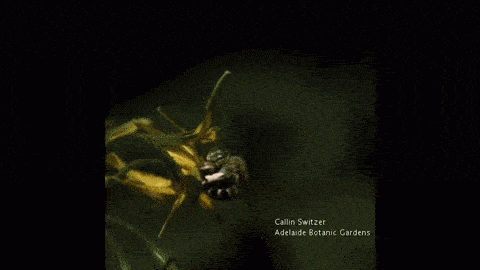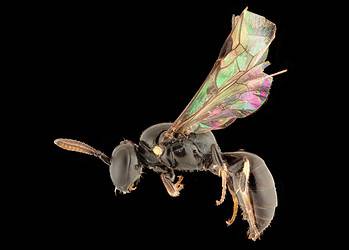Blue-banded bees employ a head on approach to pollination, a group of researchers at Adelaide University showed. While other bees use their mandibles and wings to shake the pollen, this Australian native insect is all “no-hands” and bangs its head against the flowers 350 times per second — considerably faster than any bee noticed so far.
The team studied pollination of Solanum lycopersicum (cherry tomatoes) by two bees that fill similar niches on different continents – in Australia, Amegilla murrayensis (blue-banded bee), and in North America, Bombus impatiens (common eastern bumblebee).
Videos were recorded of the two species while busy at work. Slow motion and acoustic monitoring revealed each species employed two totally different mechanisms of buzzing the flowers. While the Bombus impatiens used its wings and mouth to buzz flowers, the blue-banded bee banged its head against them. This was done at a rate of 350Hz, versus 240Hz for the North American bee.
“We were absolutely surprised. We were so buried in the science of it, we never thought about something like this. This is something totally new,” Dr. Katja Hogendoorn, bee specialist from the School of Agriculture, Food and Wine at the University of Adelaide, explained in a news release.
This means that over the same surface area, the blue-banded bee is much more efficient. Farmers, for instance, could use fewer blue-banded bees to pollinate the same hectare.
“Our earlier research has shown that blue-banded bees are effective pollinators of greenhouse tomatoes,” Hogendoorn said in a statement. “This new finding suggests that blue-banded bees could also be very efficient pollinators — needing fewer bees per hectare.”
The findings were published in the journal Arthropod-Plant Interactions.







